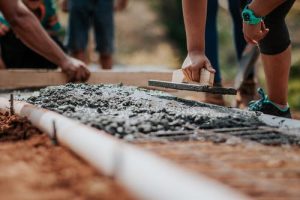Slab Heave Overlayment is the latest in roofing technology. This is a plastic membrane that is used to fill in the gaps between your roof’s shingles. It improves the structural integrity of your roof, and reduces moisture accumulation on your roof.
are two types you need to be aware of when resin injection underpinning . The pitched roof system is different from the flat roof. The first will have a number parallel slabs, which are attached to a frame made of metal. This creates a sort of V-shape. The Frame and Slab Heave This type is free from any type membrane. Instead, it is composed of a layer or plastic of metal or other plastic that is placed between the slabs.
Basically, this layer collects any moisture that can accumulate on the roof and then it is collected by the metal or plastic membrane. It prevents water vapour from seeping into the structure underneath. In this way, the slab becomes very effective in providing ventilation to the roof and the entire space. It regulates the heat within the building. The slab ensures a consistent, firm and level distribution of weight to all roofing components.
But that’s not the end. The slab heave under a roof is an important additional use. The heave below a roof can also become a problem when the metal or the plastic membrane does not provide adequate protection. The metal or plastic roof must be removed.

Generally, the metal or plastic membrane of the roof is placed directly under the heave layer Resin injection underpinning of the roofing. Thus, it causes the heave layer to be held tightly. If you want to remove the metal or plastic layer, you will need to use the heave auger. This tool can cut through the metal or plastic heave, exposing the wooden shingles or shakes. You will be able to clean the roof heave without further damage by removing the wood shingles.
As mentioned above, the metal membrane or plastic membrane under the sheave will help to keep moisture away. However, these materials may not be able stop moisture from leaking into the structure in all cases. When this happens, the moisture can expand and cause damage. For this reason, you need to repair or replace the damaged section of the roof. This is possible if the damaged area is removed prior to cleaning.
You should remove any dirt, leaves, or other debris that may have fallen from the roof during the cleaning process. This can be done a few days later. This is because they can increase water volume underneath the roof. Next, inspect the roof. If there are any damage to the pitch you should repair it immediately. The pitch is the section of the roof that extends straight from the wall or the house structure.
After repairs are made or replacement, you should remove the dirt and put the cleaned slab on top of the cleaned or replaced pitch. Slab heave is now complete, and the roof is ready for another application of coating. Let the final coating dry before you apply it. Once your roofing is dry you can begin to enjoy its beauty.

